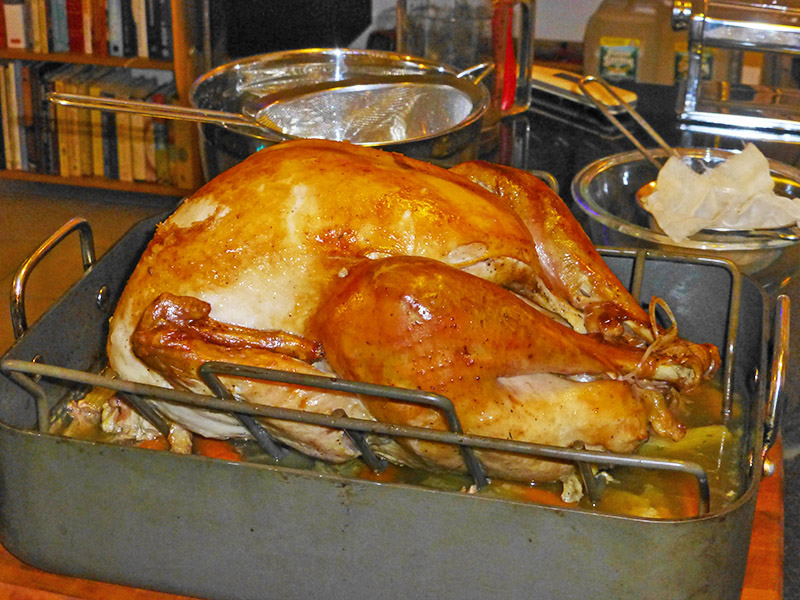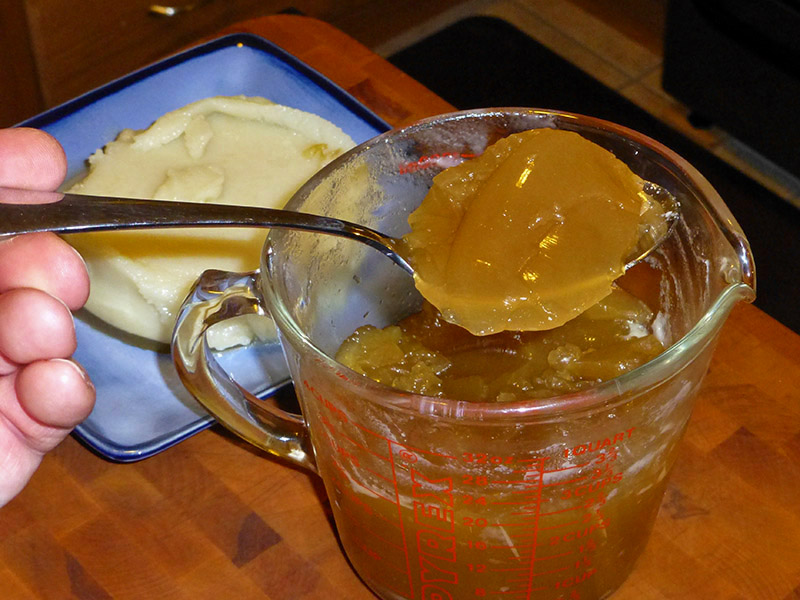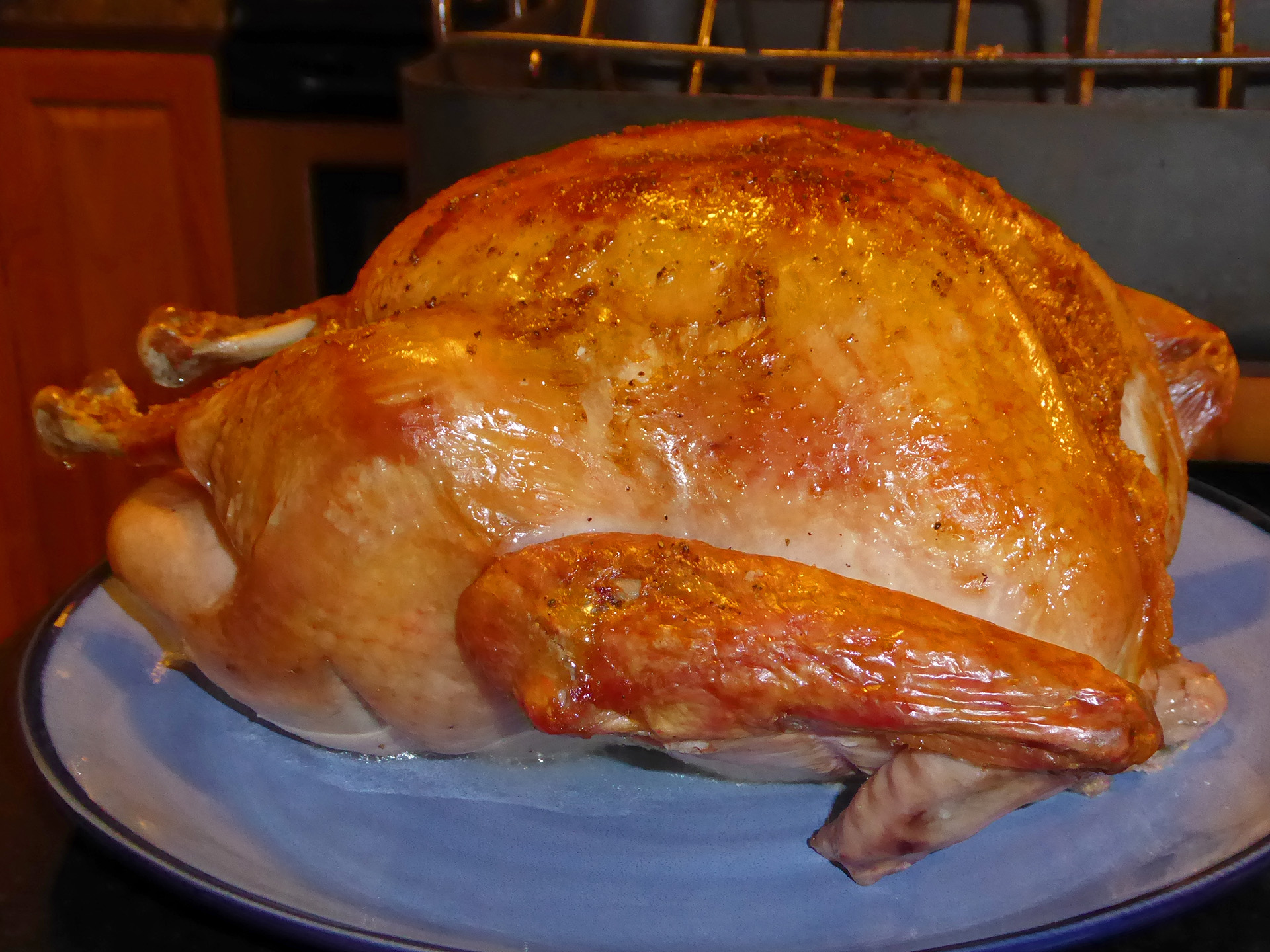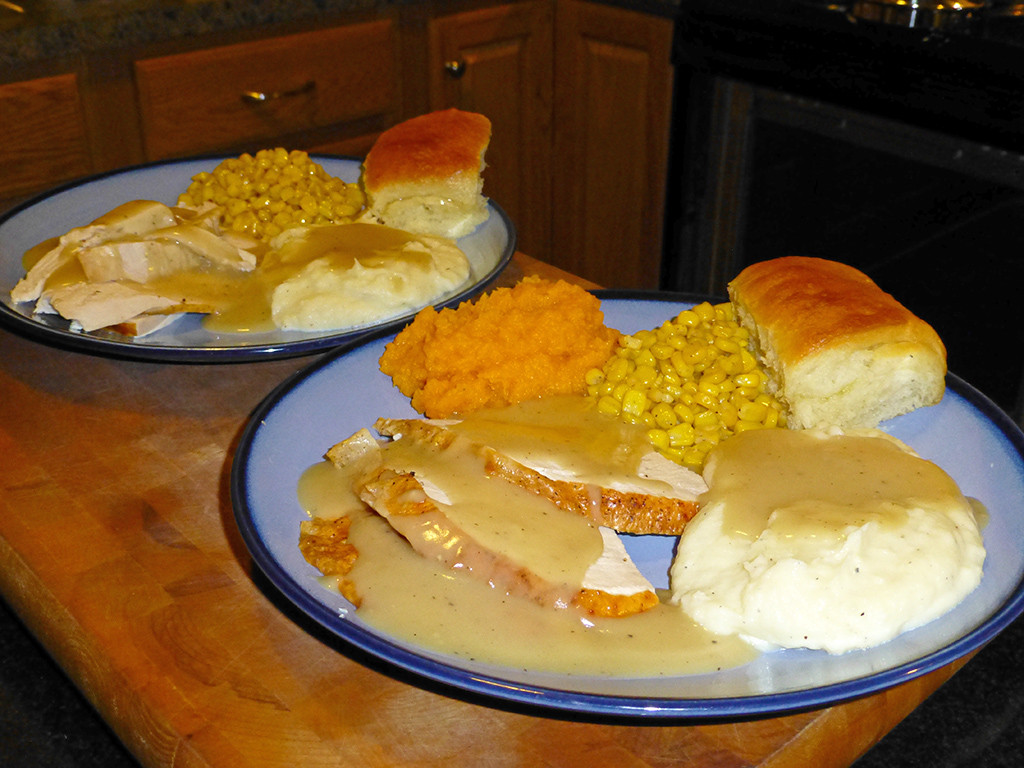I roast turkeys throughout the year, so I’ve learned a thing or two about those birds. The best trick I’ve come up with is a method of simultaneously roasting a turkey and preparing a quart of the finest turkey stock I’ve ever seen right underneath it – no four or five hours of simmering and reduction on the stovetop needed.
Outside of Thanksgiving, I often roast a turkey one night, allow it to cool somewhat, cover and refrigerate the whole bird – except for Quality Assurance slices, of course – and then get the meat off the next night for use in turkey sandwiches and sometimes for turkey tetrazzini*. In the past, each time I stripped the carcass, I’d notice the sizeable quantity of jelly that always covered the bottom of the bird. It’s a thick layer of well-set jelly, maybe a third of a cup’s worth. I knew that jelly was collagen melted from the connective tissue and bones – the source of gelatin – and that collagen is one of the keys to a fine stock, and wondered just how much was being evaporated away and wasted from the bottom of a dry pan. And so, I came up with this recipe to find out. The answer was “quite a bit.”
Recipe
To adjust for evaporation that will occur during roasting and basting, start with 5 cups/1.1 litre of water in the bottom of a roasting pan along with a bunch of roughly-chopped root vegetables and other stock components – in this photo, half a bag of baby carrots, a few celery stalks with their leaves, a few onions cut in quarters, several unpeeled cloves of garlic crushed with the flat of a chef’s knife, a few bay leaves, a small handful of whole black peppercorns, and some thyme:

Roast the turkey as normal on a rack above those – I often use Alton Brown’s 500F/260C for 30 minutes and the remainder at 350F/175C method – adding a little more water every now and then during roasting to keep the level of liquid to a quart or so, basting the turkey every twenty minutes. The basting is not to keep the turkey moist – because it doesn’t, really – but mainly to wash more collagen into the pan below, and it does also help crisp the skin. The only thing not to do is add more water to the pan in the last half-hour of roasting, when it dilutes the stock too much. At the end, you’ll have your turkey:

And this liquid gold in the pan:

Strain the contents of the pan through a close-mesh strainer into a bowl, squeezing all the juices out of the veg with the back of a spoon or ladle, strain the resulting liquid once more through some cheesecloth into a quart container, then store that in the fridge overnight – or, if you want to use some or all of it immediately for gravy, use a fat separator such as this one and off you go.
If you go the chilling route, there will be a set layer of turkey fat on top, and, after you lift that off, you’ll find that the rest is a highly concentrated and gelled stock, shown below, that I think would make even a dour French chef secretly smile.

*My turkey tetrazzini is chunks of white and dark meat with herbed sautéed mushrooms in a turkey velouté-based sauce Parisienne with Gruyère cheese added, served with freshly-made egg noodles in a casserole, an enhanced version of Tyler Florence’s recipe. Speaking of which, separately try that sautéed mushroom mixture made in the first part of his recipe on some sourdough toast. Delicious.











